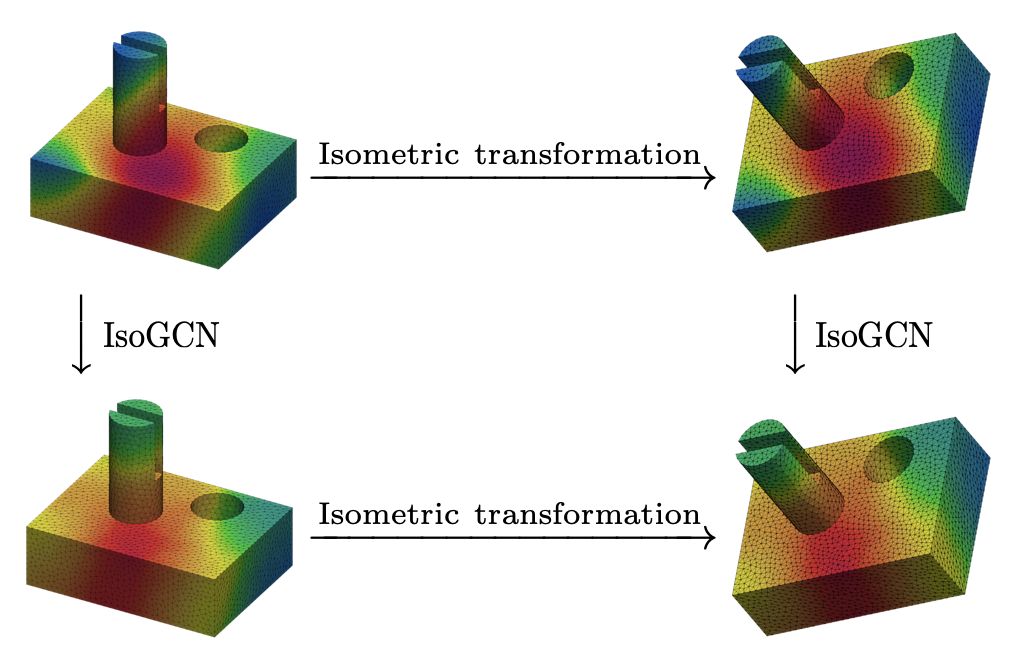Isometric Transformation Invariant and Equivariant Graph Convolutional Networks
Graphs are one of the most important data structures for representing pairwise relations between objects. Specifically, a graph embedded in a Euclidean space is essential to solving real problems, such as physical simulations. A crucial requirement for applying graphs in Euclidean spaces to physical simulations is learning and inferring the isometric transformation invariant and equivariant features in a computationally efficient manner. In this paper, we propose a set of transformation invariant and equivariant models based on graph convolutional networks, called IsoGCNs. We demonstrate that the proposed model has a competitive performance compared to state-of-the-art methods on tasks related to geometrical and physical simulation data. Moreover, the proposed model can scale up to graphs with 1M vertices and conduct an inference faster than a conventional finite element analysis, which the existing equivariant models cannot achieve.
PDF Abstract ICLR 2021 PDF ICLR 2021 Abstract

